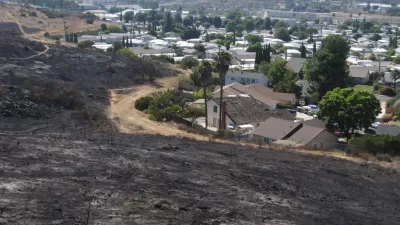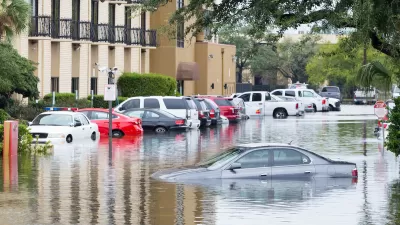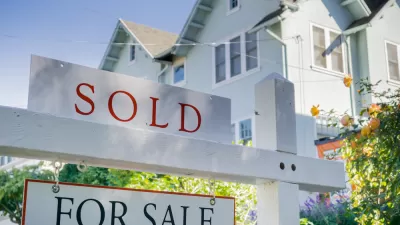Redfin data show slower home price growth in areas recently affected by wildfires, while developers rush in to rebuild.

A Redfin analysis of home prices in areas affected by California wildfires found that home values grew more slowly there than in the state as a whole, report Lily Katz and Sebastian Sandoval-Olascoaga. "In the three years after the fires, home prices climbed by 21% on average, compared with 33% growth in areas just outside the reach of the fires."
Sales also slow after a fire due to reduced inventory and fear of future fires. "Home purchases inside the fire perimeters suffered the most during the first year after the fires, plummeting 43%. By year three, that decline had shrunk to 29%, as more homes were rebuilt and memories of the fires grew increasingly distant."
"There are $628 billion worth of homes in California that face high fire risk, more than any other Western state analyzed by Redfin in June." And while average homeowners pull back in the immediate aftermath of a fire, investors swoop in with all-cash offers. "In the areas Redfin analyzed that were directly impacted by fires, there was a 595% average increase in the number of homes built during the three years after the fires." Local leaders, under pressure to recover lost tax revenue, are incentivized to rebuild quickly and encourage new development after a wildfire.
"As climate change continues to fuel life-threatening wildfires, local and federal leaders should develop plans to mitigate the risks of natural disasters and keep their communities safe." Redfin Chief Economist Daryl Fairweather gives several recommendations for mitigating wildfire risk: limiting building in high-risk areas, eliminating single-family zoning to encourage higher density in already developed areas, and raising public awareness about fire risk.
FULL STORY: Home Prices Grow at Much Slower Rate in Towns Burned by California’s Most Destructive Wildfires

Maui's Vacation Rental Debate Turns Ugly
Verbal attacks, misinformation campaigns and fistfights plague a high-stakes debate to convert thousands of vacation rentals into long-term housing.

Planetizen Federal Action Tracker
A weekly monitor of how Trump’s orders and actions are impacting planners and planning in America.

In Urban Planning, AI Prompting Could be the New Design Thinking
Creativity has long been key to great urban design. What if we see AI as our new creative partner?

King County Supportive Housing Program Offers Hope for Unhoused Residents
The county is taking a ‘Housing First’ approach that prioritizes getting people into housing, then offering wraparound supportive services.

Researchers Use AI to Get Clearer Picture of US Housing
Analysts are using artificial intelligence to supercharge their research by allowing them to comb through data faster. Though these AI tools can be error prone, they save time and housing researchers are optimistic about the future.

Making Shared Micromobility More Inclusive
Cities and shared mobility system operators can do more to include people with disabilities in planning and operations, per a new report.
Urban Design for Planners 1: Software Tools
This six-course series explores essential urban design concepts using open source software and equips planners with the tools they need to participate fully in the urban design process.
Planning for Universal Design
Learn the tools for implementing Universal Design in planning regulations.
planning NEXT
Appalachian Highlands Housing Partners
Mpact (founded as Rail~Volution)
City of Camden Redevelopment Agency
City of Astoria
City of Portland
City of Laramie





























